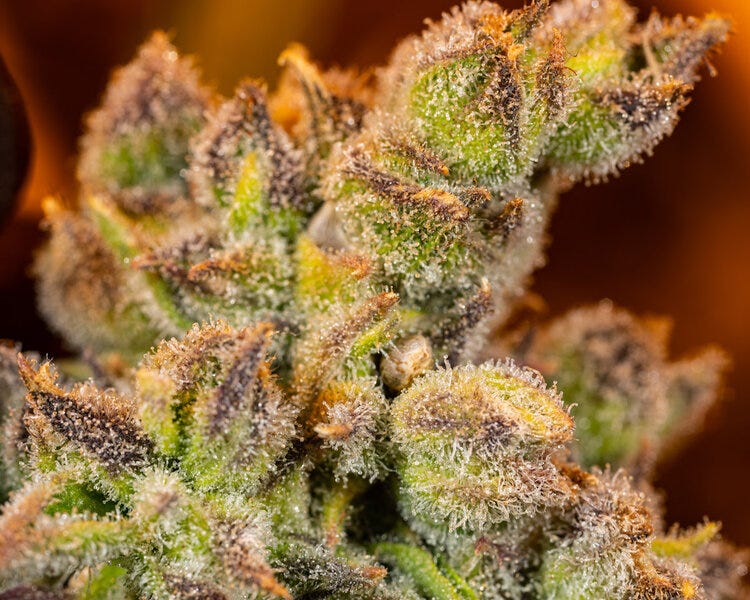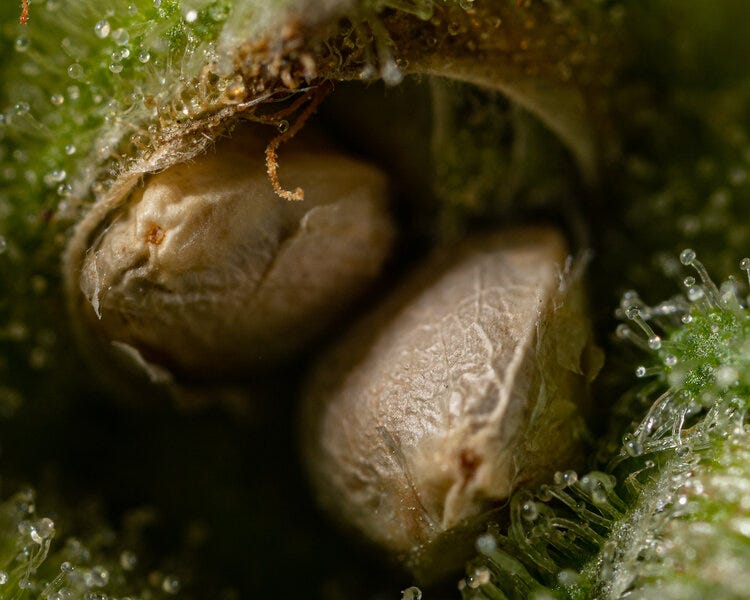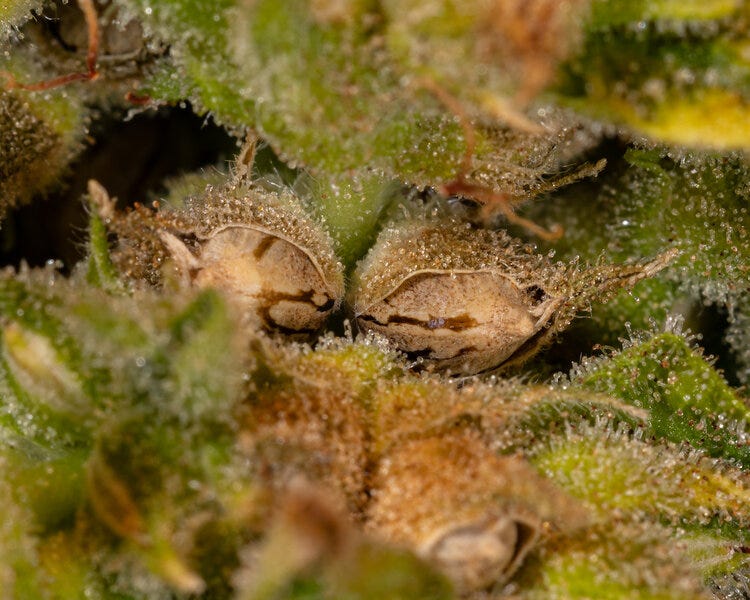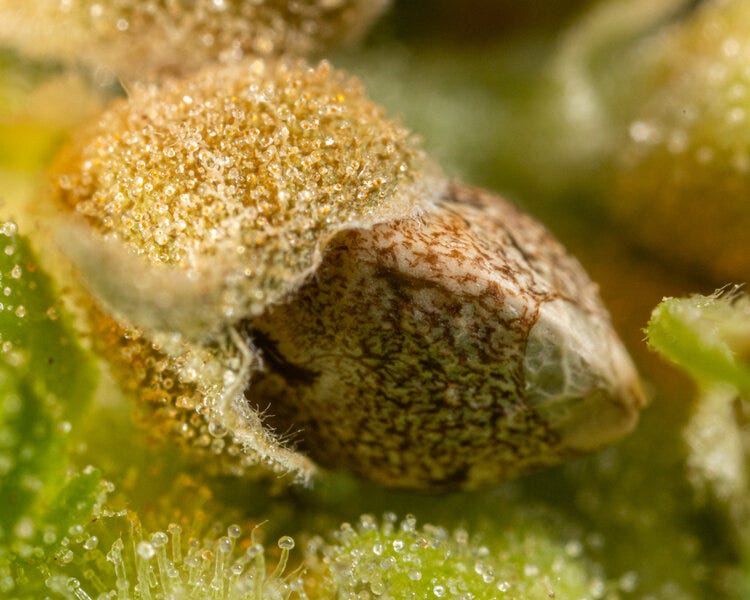Breeders, Seed Makers & Seed Brokers
What's the difference?

If you breed Yellow Labradors, you’re using stable lines to produce offspring that accurately represent that breed.
Alternatively, if you were to mate two genetically-random, attractive dogs, you’re a dog maker, not a breeder, you’ve just made dogs but you aren’t a dog breeder.
There’s time, planning, and execution that goes into breeding a new dog.
The difference between a Labradoodle and a Labrador and a Poodle is that a Labradoodle is not a breed, it is neither homogenized nor stable. It is a cross of two stable parents but in itself is not a stable line.
The difference between a seed maker and a breeder is intention, and time spent developing your process.
Breeders cross things with intentional endgame in mind.
They seek desired expressions and then work to isolate and homogenize those expressions.
Most seed makers are crossing the best varieties that they have on hand.
This is most commonly observed in seed releases of a large stable of varieties with the same pollen donor, the seed maker had pollen from one plant so they hit the rest of the garden with the pollen. Their next line is often of a similar stable with a new pollen donor. And the cycle repeats.

Then, there’s wholesale seed makers, often based in Europe, using genetics that they are told to use, and whose seeds are sold back to seed companies or distributors.
Seed brokers are wholesalers and retailers.
They buy seeds and then sell them under multiple pretenses.
Either the seed company or broker will rename the variety to whatever is convenient for them, often not even resembling the actual names of the parents that were used in the cross.
When it comes to the broker buying from the wholesale market, there are a lot of unknowns as far as how the seeds were made and with what genetics.
To be clear, each of these roles has added value to the cannabis genetics industry at some point.
It’s not that they are ill-intentioned, there are plenty of good seeds that have come out of this system but there are a lot of unknowns and the chain of command has a lot of moving parts.
Unfortunately, the reality of the cannabis genetics industry is that we typically end up with more Labradoodles than Labradors, and with the proliferation of the former, we are seeing the latter becoming less common, resulting in more seeds that are the product of seed making rather than intentional breeding.
On top of that, the role of seed brokers in regularly renaming the seeds being bought and sold has further compounded the problem, which is why many put little faith into the accuracy of strain names.
This problem was underscored when 1000s of samples were compiled by groups with genetic databases, only to find out that many were renamed but identical cuts.
While we can’t analyze seeds, we can sequence cannabis seedlings using enough genetic markers to know what varieties are related or unrelated and to what degree.

Weed Gets Better in Time
Typically, seed makers are using some sort of popular male or popular “cut”, and they hit it into a bunch of varieties. That’s their cycle. They find the next cut, and repeat the process.
A breeder continues to work those lines, finding the best of them, creating F2s, F3s, and Backcrosses (Bx).
All breeders started as seed makers.
When I started as a seed maker, I had to make new crosses (compensatory breeding). Right away, I took my favorites and tried to homogenize those, creating F2’s and Bx1’s.
If you had a good line 4-5 years ago, you should have much better or multiple versions of it now. If each round doesn’t get better, they aren’t breeding properly, they’re seed making.
If you were to open a copy of a 1985 High Times, it’s pretty clear that the weed was awful by today’s standards.
Today’s weed is exponentially better because the byproducts of both seed making and breeding have made it better.
Changing the Game
The most dangerous phrase in language is ‘we’ve always done it this way’ but that’s exactly how the seed industry continues to operate, brokers continue to rename seeds sourced from seed makers.
While there are breeders out there like Odie Diesel and Alana Greenfire that are dedicated to the breeding craft and who remain largely well known among tenured growers, they don’t necessarily have as much notoriety as companies who are less dedicated to the craft.
There is an incredible void in this industry of leaders, innovators and professionals. In the cannabis genetics game, most people will go with whatever works and typically that is the status quo.
We are a fledgling industry, so accepting the status quo is unacceptable.
We are possibly decades behind where we need to be and it genuinely bothers me that people aren’t trying harder to continue to improve. Often, human beings have a tendency to stick with what is comfortable instead of adapting to what is new. When change is made, those that are complaining are usually left behind.
My journey from seed maker to breeder underscores this belief and parallels the process of learning a craft or art like Jiu-Jitsu; it takes time and a desire to be better to make that switch.
You can watch Jiu-Jitsu videos all day but you’ll get your ass whooped in class against someone who actually rolls every day.
Similarly, it took years of making seeds and learning to breed. I didn’t consider myself a breeder until last year, when i realized that the majority of my projects were working to homogenize previously-made varieties versus making new ones.

ETHOS Endgame
When it comes to seeds, I generally support full disclosure.
There are certain terp profiles, certain cannabinoid profiles, certain sets of effects, plant morphology and morphogenesis that are unique and, in spite of efforts by a variety of breeders, cannot be retained without the “problems” associated with those genetics; Chem D is just not Chem D if you’ve bred out the intersex traits.
For me, it’s all about my endgame.
Check all the boxes on the bulk of varieties I sell: characteristics like vigor, yield, quality, pathogen resistance and ease of grow in most environments with generally faster flowering times in both indoor and outdoor.
There’s no reason there should be a weakness in a plant if you are taking time and breeding properly.
If there are any weaknesses, like a plant that isn’t a good rooter, you’re not done breeding.
The longer a line is bred, the less weakness there should be across the board, whether it be pathogen resistance, rooting, desired morphology, or something else.
The further you work a line, the easier it is to predict future filial.
When choosing a breeder, you aren’t going to take the most terpy plant if it has weak roots; you have to keep projects moving forward.
Personally, I am very rarely satisfied with any variety I’ve made because I can always think of something to add to it. That is, until Endgame. Endgame has 6-7 different varieties that are all breeders that are in its genetics. Now, I can back cross into each one and make homogenous offspring.
Commercially, I feel the stuff that we are releasing and making this year is the best I’ve ever put out. I’m very close to picking 12-20 varieties and really homogenizing those, continuing to back-cross and stabilize the best versions of everything.

Any time I bring in a new cut with all the hype, it already reminds me of something that we have had in the garden. It might be slightly different, but, genetically, it doesn’t vary greatly from what’s in the arsenal; I would make new varieties if I got old hazes and classic cuts that are awesome.
Over the next three years, I will only be introducing about 20 new crosses at the absolute most but I’ll be working close to 100 variations of lines that we have already made, homogenizing them and breeding directionally to bring out specific unique lines.
Subscribe to our Substack to receive new content automatically
This article is featured in Vol. 1 of The ETHOS Magazine.
Grab a collector's edition of the ETHOS magazine in print HERE.